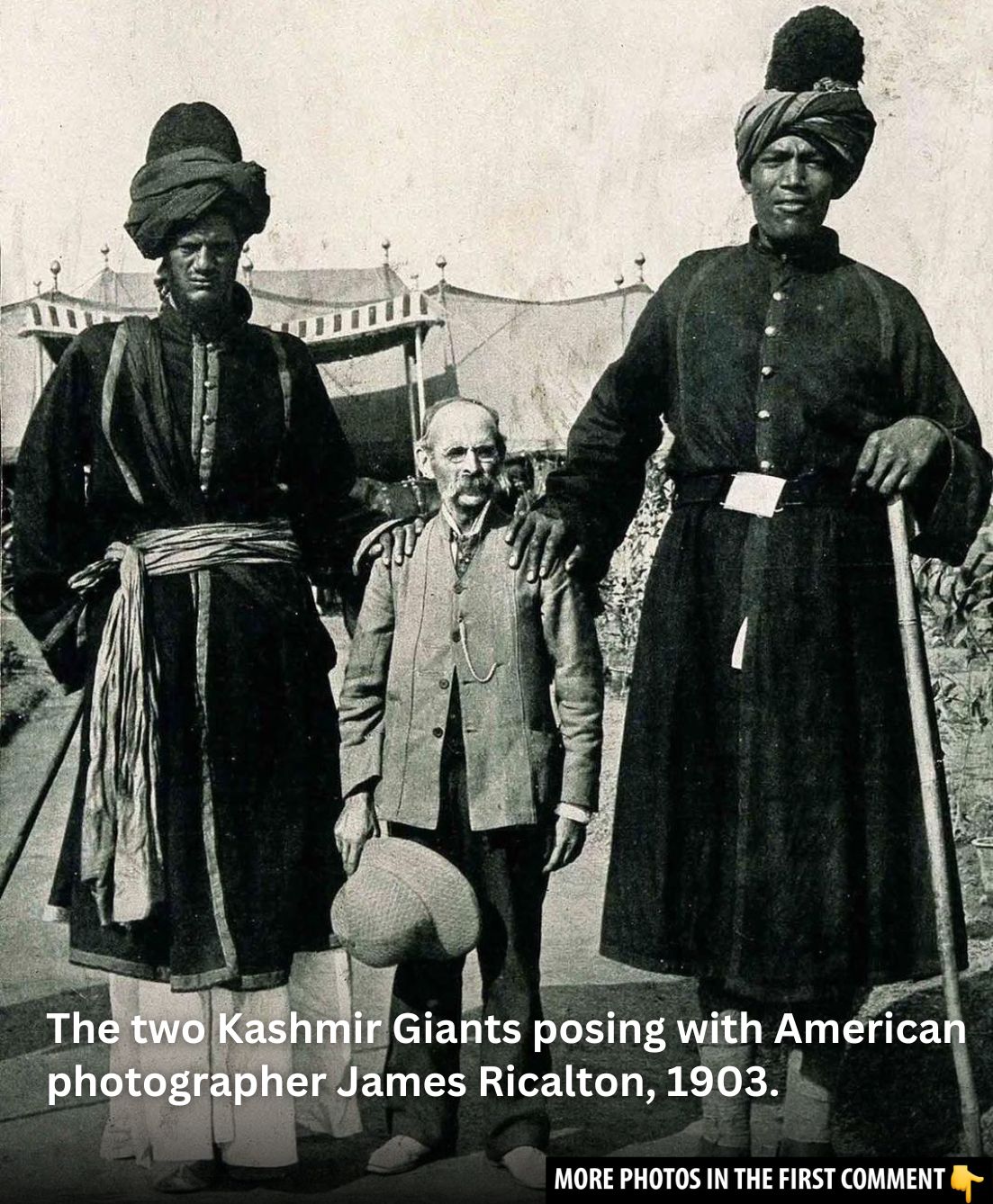In 1903, the Delhi Durbar was a grand celebration that showcased the splendor of the British Empire, but it was two towering figures from Kashmir who captured everyone’s attention. Known as the “Kashmir Giants,” the brothers stood over 7 feet tall, leaving a lasting impression on all who saw them. Photographed by renowned American photographer James Ricalton, these giants became not just part of the royal spectacle, but symbols of the era’s imperial grandeur. Their presence at such a monumental event made history, merging human fascination with the pageantry of the time.
The Delhi Durbar of 1903: A Grand Celebration of Empire
The Delhi Durbar of 1903 was designed to celebrate the succession of King Edward VII as the Emperor of India, though the king himself did not attend. Instead, Lord Curzon, the British Viceroy of India, orchestrated a magnificent event to assert British power and display the glory of the monarchy. The Durbar, held on January 1, 1903, featured an elaborate parade of elephants, Indian maharajas adorned with jewels, and military displays, all meant to highlight the power and majesty of the British Empire.
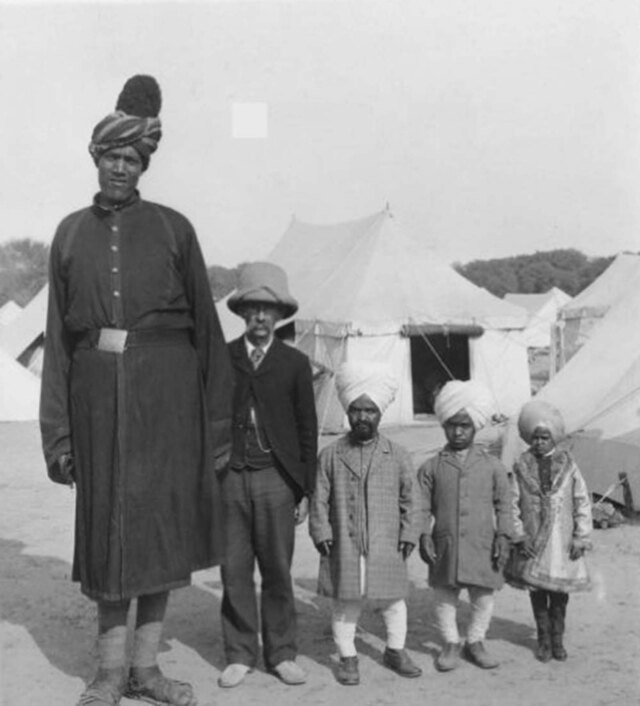
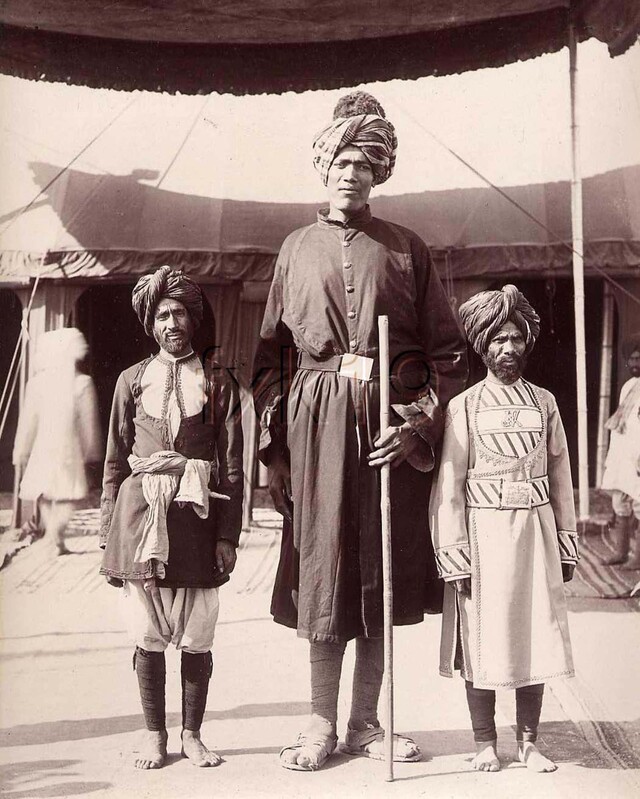
While the event was a grand affair, it was the presence of two giants from Kashmir that captured the collective imagination. The brothers, introduced by the Maharaja of Jammu and Kashmir, were no ordinary individuals. Towering over everyone at the Durbar, they were more than just a spectacle—they became symbols of imperial power and awe.
Video
Watch this video to discover real-life human giants who truly exist!
The Arrival of the Kashmir Giants: A Stunning Impression
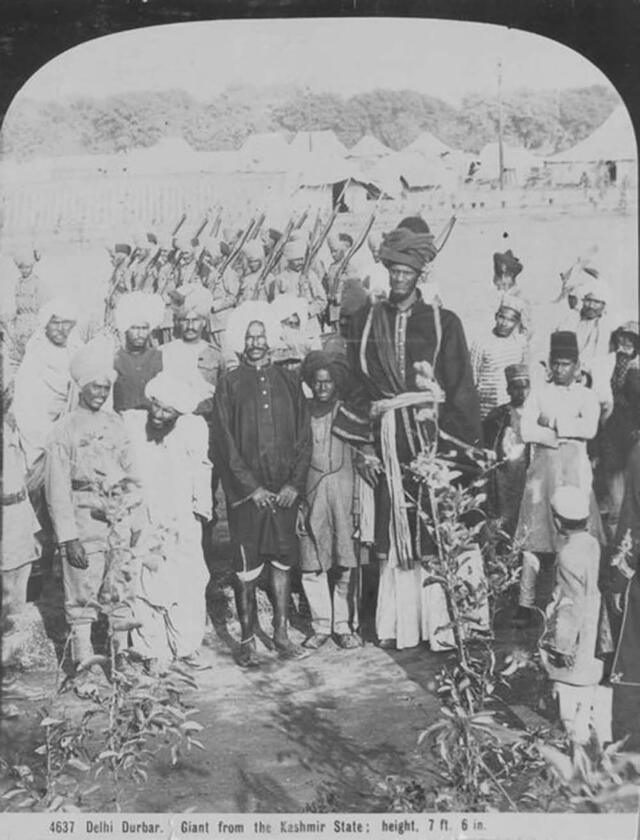
The Two Kashmir Giants, standing at 7’9” and 7’4” tall, were among the tallest men in the world at the time. Their height alone would have made them remarkable, but it was their role as elite riflemen in the Maharaja’s service that added depth to their significance. These towering figures, dressed in the elaborate regalia of royal guards, stood head and shoulders above the rest, creating an undeniable presence in the midst of the grand Durbar.
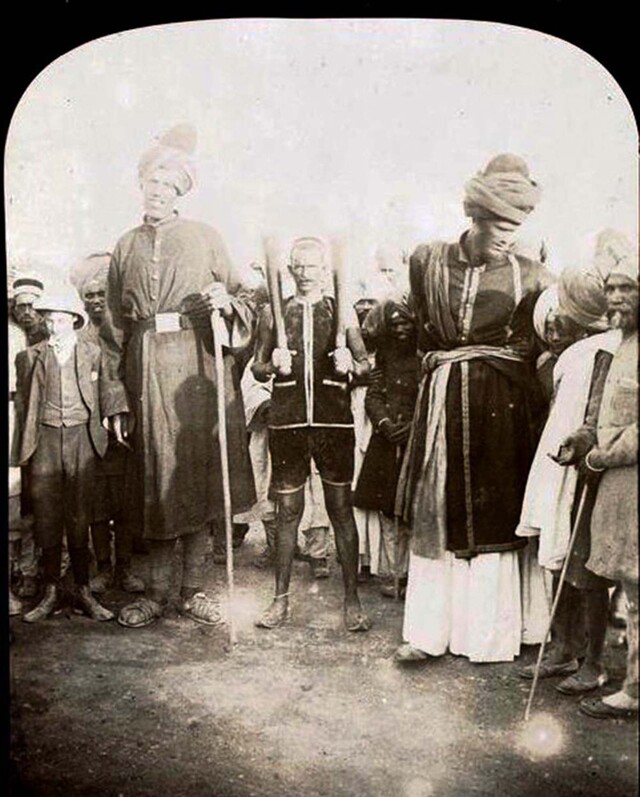
Their appearance was not merely for show; they were part of the Maharaja’s military entourage, symbolizing both the strength and prestige of the region they came from. The brothers’ size and importance made them central to the visual spectacle of the Durbar, further enhancing the grandeur of the event.
The Role of James Ricalton: Capturing History in Photographs
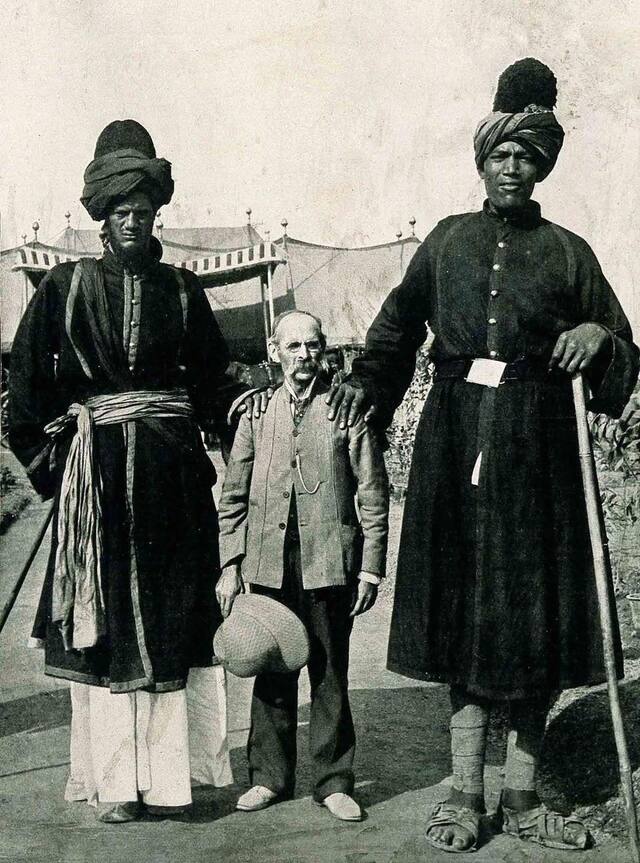
James Ricalton, an American photographer and traveler, was present at the Durbar to document the event. Known for his photography of cultural and political landmarks, Ricalton’s encounter with the Two Kashmir Giants produced some of the most iconic images from the Durbar. Through his lens, Ricalton captured not only the grandeur of the event but also the extraordinary presence of the brothers.
In several of Ricalton’s photographs, he is seen posing alongside the giants, dwarfed by their towering height. These images serve as a reminder of both the awe-inspiring spectacle of the Durbar and the exceptional human figures that were part of it. Though we don’t know Ricalton’s exact height, his photographs show just how much the giants stood out from the crowd, emphasizing the physical disparity between them and the regular guards.
The Giants’ Background: From Kashmir to the Durbar
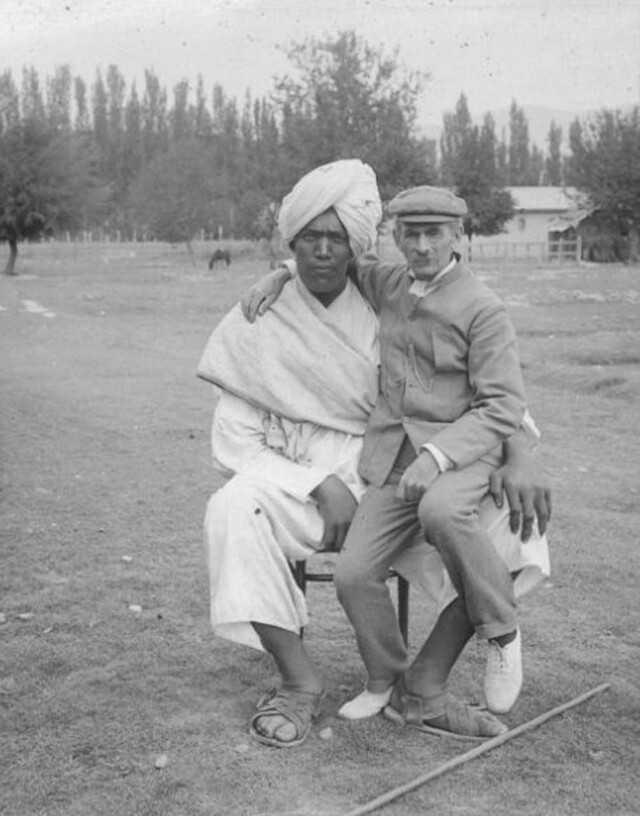
The Two Kashmir Giants’ origins remain somewhat mysterious, though it is believed they came from a place called “Balmokand” in Kashmir, a location that is difficult to trace in modern maps. They were known to be twin brothers, and their extraordinary height made them stand out even among the royal guards of the Maharaja of Kashmir. The brothers were highly regarded not only for their size but also for their skill as riflemen, adding a layer of prestige to their presence at the Durbar.
Their role at the Durbar was a visual and symbolic representation of the Maharaja’s power. The inclusion of such imposing figures in the royal entourage was a strategic move to display both strength and uniqueness. Their towering figures represented the mystique and power of the Maharaja’s rule and highlighted the grandeur of the event.
The Legacy of the Kashmir Giants: Beyond the Durbar
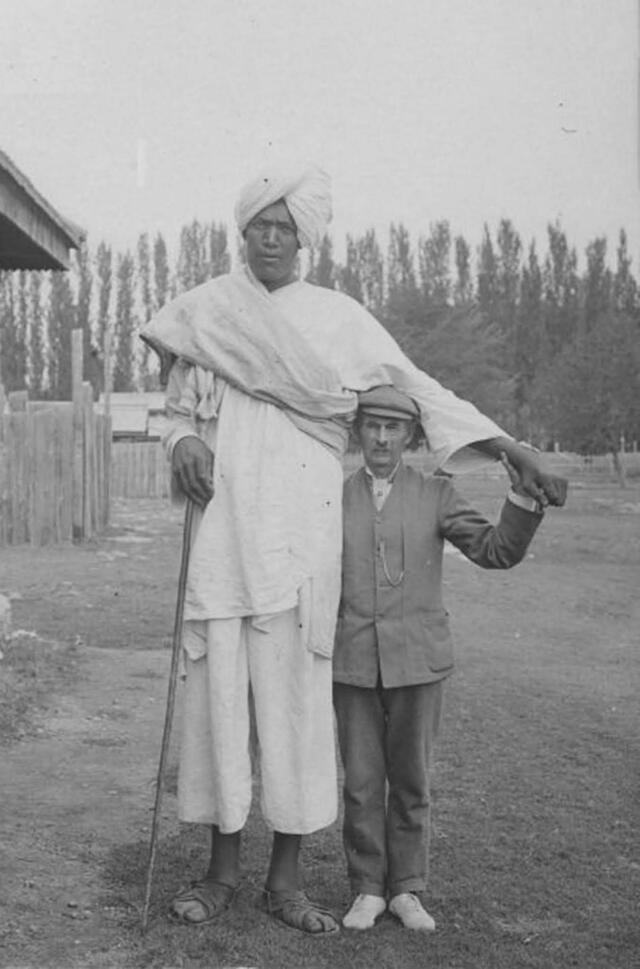
The legacy of the Two Kashmir Giants extends far beyond the Delhi Durbar of 1903. They were not merely part of a royal procession; they embodied the cultural richness and military power of Kashmir, a region that was under the rule of the Maharaja but also part of the British Empire. Their presence at the Durbar left an indelible mark on the event and has since become a symbol of the time, immortalized in photographs that continue to captivate audiences around the world.
Their stature and significance have made them figures of fascination in both India and the West, representing the intersection of spectacle, royalty, and the human fascination with the extraordinary. The brothers’ appearance at the Durbar serves as a powerful reminder of how physical presence can symbolize power and influence, leaving behind a legacy that has persisted for more than a century.
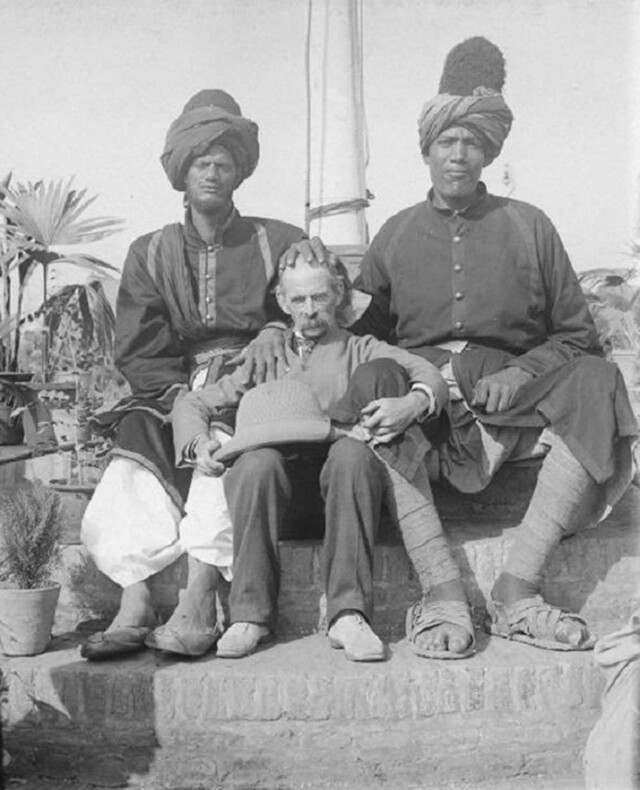
Video
Watch this video from The UnXplained to learn about the giant skeletons found in a Wild West cave in Season 4!
Conclusion: The Enduring Fascination with the Two Kashmir Giants
The Two Kashmir Giants, with their towering presence and historical significance, remain one of the most memorable aspects of the 1903 Delhi Durbar. Through the lens of James Ricalton and the spectacle of the event, they have become symbols of imperial grandeur, power, and the enduring human fascination with the extraordinary. More than just figures at a royal procession, they were representations of Kashmir’s strength, the mystique of the British Empire, and the allure of human difference. Even a century later, their image continues to captivate and intrigue, leaving behind a legacy that reflects both the spectacle of the past and the fascination of the present.
